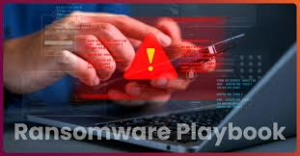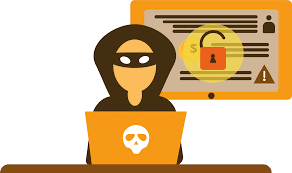In the realm of cybersecurity, change is not just expected; it is a constant reality. As technology evolves at a rapid pace, cyber attackers are also innovating their strategies and tactics to exploit vulnerabilities. Organisations must recognise that staying merely updated on trends isn’t sufficient; they need to adopt a proactive approach to safeguard their assets truly.

In this blog, we will explore five pivotal trends that are currently transforming the cybersecurity landscape. One significant concern is the rise of emerging nation-state threats, where geopolitical tensions fuel sophisticated cyber operations. Additionally, generative AI’s capabilities can both bolster defences and pose new risks as it becomes accessible to malicious actors.
Understanding these trends is essential for any organisation looking to thrive amid uncertainty. We will provide insights into practical steps you can take to enhance your security posture. By anticipating potential risks and implementing robust security measures in response, you can better protect your organisation from evolving threats in the digital landscape. Join us as we navigate these critical developments in cybersecurity.
Trend 1: Social Engineering Puts the Spotlight on Individual Security
Advanced social engineering attacks are increasingly targeting specific individuals within organisations. Attackers utilise sophisticated techniques to steal credentials and gain unauthorised access to sensitive systems, emphasising the need for enhanced individual security measures.
Mobile devices have emerged as a prime entry point for cybercriminals. Users often assume their smartphones are secure, leading them to pay attention to essential protections. Unfortunately, the small screens and simplified interfaces of mobile devices can easily obscure warning signs, making users more susceptible to SMS phishing attacks.

Furthermore, many employees use their devices for work-related tasks, creating additional vulnerabilities that attackers can exploit. Mobile phones’ dual-use nature blurs the lines between personal and professional security.
To combat these threats, organisations must prioritise individual-level security strategies. As a result, tools such as Mobile Device Management (MDM) and Mobile Threat Defense solutions will become increasingly vital in safeguarding both personal and corporate data. By focusing on training and technology tailored for individual users, companies can better protect themselves against these evolving social engineering tactics.
Trend 2: Evolving Sophistication of Hacking Groups and Nation-States
Hacking groups, particularly advanced persistent threat (APT) organisations from countries such as China, Russia, and North Korea, are becoming increasingly sophisticated in their attacks. These groups have recently intensified their efforts against both public and private organisations, demonstrating a notable increase in sophistication and coordination.

In the upcoming months, we can anticipate greater collaboration among nation-states with destructive aims. This may include espionage targeting critical infrastructure or unauthorised access to sensitive government files. As geopolitical tensions rise, new countries may also emerge as significant threat actors on the global stage.
The landscape of cyber warfare is shifting due to developments like those at NSO Group, the developer of Pegasus spyware. Following restrictions on selling advanced spyware to non-NATO nations, new entities backed by Russia and China have surfaced to take advantage of this gap.
As nation-state-level spyware becomes more widely available, techniques utilised by APTs are likely to filter down into regular cybercriminal activities. This trend will contribute significantly to the proliferation of accessible spyware tools in the cybercriminal ecosystem.
Trend 3: The Decline of VPNs Among CISOs
As organizations adapt to a hybrid and remote workforce, Chief Information Security Officers (CISOs) are increasingly abandoning traditional Virtual Private Networks (VPNs) for remote access security.
One primary concern is that VPNs provide unrestricted access to the entire organisational infrastructure. This broad access not only makes them appealing targets for cyber attacks but also facilitates lateral movement within the network, increasing vulnerability.

In contrast, Zero Trust Network Access (ZTNA) presents a more robust alternative, emphasising minimal trust and granular control. With ZTNA, users can be restricted to specific applications instead of gaining blanket access to the entire network.
This approach significantly reduces the attack surface and hinders threats’ ability to move laterally within the system. By implementing ZTNA, organisations can better safeguard sensitive corporate data.
Additionally, effective ZTNA solutions enable visibility into all private applications running in the corporate landscape. They also allow organisations to track user risk profiles and ensure data protection regardless of location or device used.

Trend 4: Generative AI is the Next TikTok
Over the past year, many organisations have voiced concerns about banning popular applications like TikTok and PinDuoDuo. The primary worry is that these apps may be transmitting sensitive user data to foreign nations or malicious entities.
However, simply banning specific apps is a superficial solution to a much broader issue. With countless applications circulating personal and sensitive information online, it’s becoming clear that a more comprehensive approach is needed.

Organisations are now focusing on developing robust security strategies. These frameworks aim to prevent users from sending data to unauthorised locations, addressing vulnerabilities head-on rather than merely treating symptoms.
The emergence of generative AI tools like ChatGPT and Bard compounds these challenges. While these technologies enhance productivity and creativity, they also function as shadow IT systems that can inadvertently facilitate data leaks.

Sensitive information—such as intellectual property, proprietary algorithms, and trade secrets—may unknowingly end up in these generative AI platforms. Therefore, organisations must implement measures that restrict users from uploading critical data to ensure their assets remain secure in this evolving landscape.
Trend 5: Educate Yourself on Phishing and Smishing Attacks
Phishing is a common tactic employed by cybercriminals. They send emails that appear to come from legitimate sources, such as your bank or credit card company. These spoofed emails are designed to trick unsuspecting individuals into providing sensitive personal information, such as passwords or account numbers. In many cases, these messages can also contain malware, which can compromise your devices and data.
On the other hand, smishing employs similar deceptive techniques but uses text messages instead of emails. Just like phishing, smishing aims to deceive users into revealing private information.

To safeguard yourself against these threats, familiarise yourself with your banking applications and their expected functionalities. According to security expert Walsh, recognising unusual questions or pop-ups can help you identify potential scams before they lead to severe issues.
Constantly scrutinise communication that requests personal information or urges immediate action; legitimate organisations rarely ask for sensitive data through email or text. By staying vigilant and informed about these tactics, you can significantly reduce your risk of falling victim to phishing and smishing attacks.
Setting up alerts through your bank’s app, email, or text messages can be an invaluable safeguard for your financial security. These notifications will provide you with real-time updates regarding any transactions made on your account.
Receiving instant alerts about withdrawals, deposits, or purchases helps you monitor your finances closely. If you notice any unfamiliar activity, you can take immediate action to investigate the transaction further.
These timely notifications are particularly crucial in detecting potential fraudulent movements within your account. Once alerted to suspicious activity, you can contact your bank quickly to address the issue and potentially prevent further unauthorised transactions.
Additionally, many banks allow customisation of these alerts, enabling you to choose what types of transactions trigger a notification. This ensures that you’re only informed about matters that concern you most.
Implementing this feature is a simple yet effective way to enhance the overall protection of your banking experience. Utilise this essential tool to stay proactive in managing your financial well-being.

As technology continues to evolve rapidly and cyber threats become more sophisticated, organisations face unprecedented challenges in cybersecurity. Companies must adopt a dynamic and agile approach to protect their sensitive information and infrastructure.
A vital part of this preparation involves conducting regular risk assessments to identify vulnerabilities within the organisation. This proactive measure allows businesses to anticipate potential threats and implement appropriate safeguards before issues arise.
Additionally, investing in employee training is crucial. Equipping staff with knowledge about cybersecurity best practices helps build a culture of security awareness, which minimises human error—a common factor in breaches.
Organisations should also consider implementing advanced technologies, such as artificial intelligence and machine learning, which can enhance threat detection and response capabilities. By harnessing these tools, businesses can better adapt to an ever-changing cyber landscape.
Regularly updating software and systems is another vital step in ensuring robust protection against emerging threats. Maintaining current security protocols can significantly reduce the likelihood of successful attacks.

In summary, preparing for future challenges requires a multifaceted strategy that combines risk assessment, employee education, technological advancements, and routine updates. With these measures in place, organisations will be better equipped to navigate the complexities of modern cybersecurity risks.
Maxthon
Smartphones are essential to our daily lives, making it increasingly necessary to safeguard them. To begin securing your device, the first step is to locate the Maxthon Security app. Picture yourself navigating your device’s app store, fingers gliding over the screen as you search for Maxthon Security. With a quick tap on the download button, you kick off a process that will enhance your phone’s protection. As the installation completes, anticipation grows within you. You eagerly open the app, ready to strengthen your smartphone’s security features.

Upon launching it, you’ll see a prompt asking you to set up a strong password or PIN. This isn’t just any ordinary password; it must be a robust combination of letters, numbers, and symbols designed to resist potential threats. After choosing and confirming a secure option that meets your satisfaction, you’re ready to delve into additional protective measures for your device.
If your smartphone has biometric capabilities such as fingerprint scanning or facial recognition, now is an ideal time to take advantage of this sophisticated technology. Navigate to Maxthon Security’s settings and enable these features; they add an extra layer of protection against unauthorised access.
Once these initial steps are completed, it’s time to turn on real-time protection—a feature designed for ongoing vigilance against emerging threats. This powerful tool can be found in Maxthon Security’s settings; activating it means that your phone will continuously scan cyberspace for any signs of danger. Should anything suspicious arise, you’ll receive instant notifications—like having a vigilant guardian at your side.
However, don’t let your guard down! Regular updates are vital for keeping Maxthon Security functioning optimally against evolving cyber threats. In fact, consider enabling automatic updates in your device settings so that maintaining top-notch security becomes effortless and doesn’t require constant attention.
